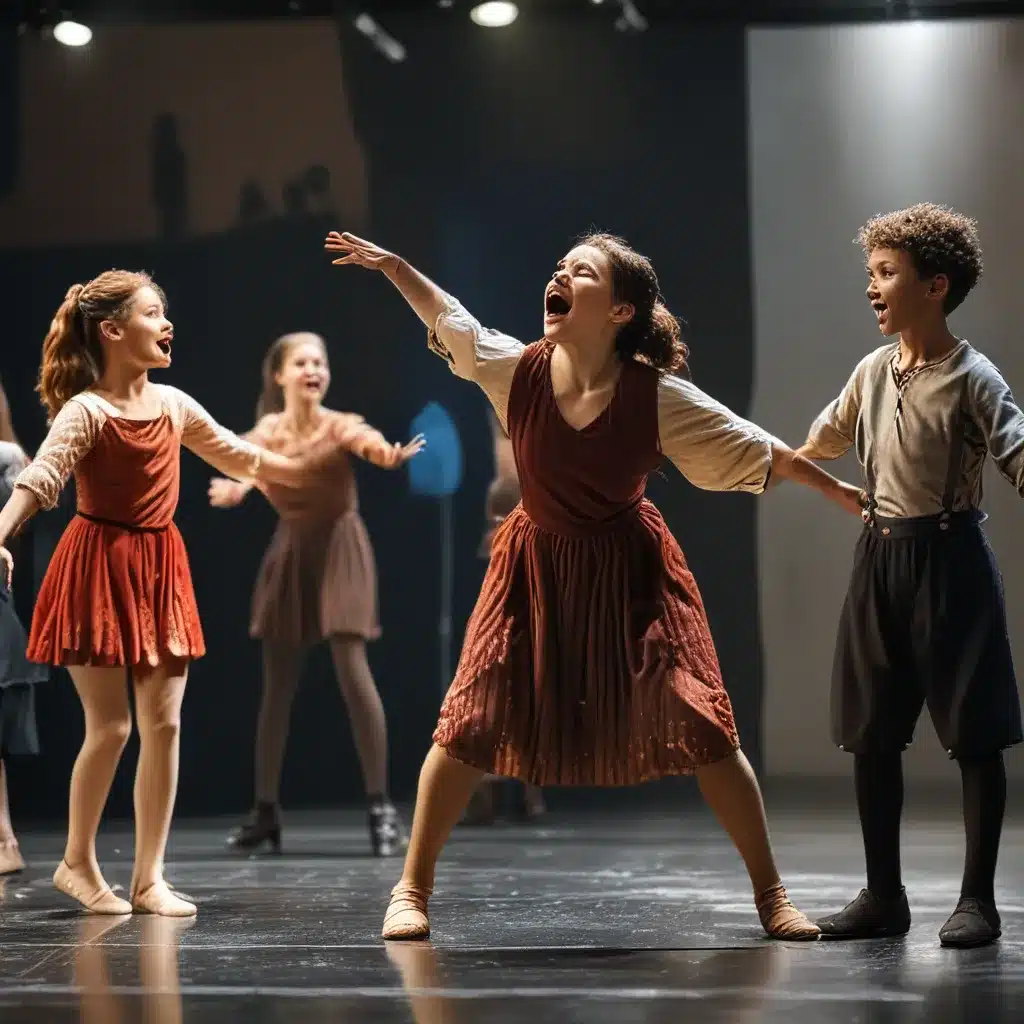
The Power of Movement in Theater
As someone who’s always been fascinated by the expressive power of the human body, I’ve long believed that movement is an integral part of the theatrical experience. Whether it’s the graceful pirouettes of a ballerina, the dynamic leaps of a Broadway dancer, or the subtle gestures of a seasoned actor, the physicality of performance can convey emotions, establish character, and transport audiences to entirely new worlds.
In my years working in the theater industry, I’ve had the privilege of collaborating with artists who have truly mastered the art of physical storytelling. These individuals possess an innate understanding of how the body can be used as a tool for communication, and they’ve developed techniques to harness the full potential of movement on stage.
Unlocking the Emotional Potential of the Body
One of the key insights I’ve gained from these experiences is the deep connection between the body and the emotions. As Dr. Dan Siegel so eloquently articulates in his work, we often “hold trauma and pain in our bodies,” and physical movement can be a powerful means of releasing and processing those deep-seated feelings.
This is particularly true in the realm of musical theater, where characters can express a wide range of emotions through song and dance. By incorporating thoughtful, intentional movement into their performances, actors can amplify the emotional impact of their storytelling, resonating with the audience on a visceral level.
Fostering Ensemble Collaboration
Another aspect of physical storytelling that I find fascinating is its ability to foster a sense of ensemble and collaboration among performers. When a group of actors work together to create a cohesive, dynamic physical language for a production, they develop a deep understanding of one another’s movements and a heightened awareness of their collective energy on stage.
This collaborative approach to physical expression is at the heart of the work being done at Echo Theater Company, an organization dedicated to “the celebration of community using movement and ensemble theater traditions.” Through their “Performance Lab” program, young performers have the opportunity to explore the intersections of circus arts, physical theater, and collaborative storytelling, learning to harness the power of movement to bring their creative visions to life.
Bridging the Gap Between Mind and Body
One of the biggest challenges I’ve observed in my work with theater students and professionals is the tendency to prioritize the intellectual and verbal aspects of performance over the physical. Too often, we become so preoccupied with memorizing lines, understanding character motivations, and perfecting vocal technique that we neglect the fundamental importance of the body in the creative process.
However, as we’ve seen through the work of pioneers like Dr. Jennifer Rubens and the team at the California State University, Fullerton Department of Theatre and Dance, integrating movement-based practices into our training and performance can have profound benefits. By bridging the gap between the mind and the body, we can unlock new levels of emotional authenticity, creative expression, and ensemble connection.
Embracing the Expressive Power of Movement
As I reflect on my own journey in the theater, I’m struck by the transformative power of physical storytelling. Whether it’s the thrill of executing a perfectly synchronized dance number, the intimacy of a subtle, gesture-driven scene, or the sheer exhilaration of a full-body, energetic performance, the ability to communicate through movement has the potential to captivate, inspire, and move audiences in ways that purely verbal or intellectual approaches cannot.
That’s why I’m so passionate about encouraging theater artists, educators, and students to embrace the expressive power of the body. By incorporating intentional movement practices into their training and creative processes, they can deepen their connection to their characters, their fellow performers, and the stories they’re bringing to life on stage.
Discover the Art of Physical Storytelling at the Musical Theater Center
If you’re interested in exploring the intersection of movement and musical theater, I encourage you to check out the resources and programs offered by the Musical Theater Center. Whether you’re a seasoned performer looking to hone your physical storytelling skills or a beginner eager to discover the transformative power of movement, there are countless opportunities to learn, grow, and collaborate with like-minded artists.
So, let’s embrace the art of physical storytelling and unlock the full expressive potential of the human body. Who knows where the journey will take us – but I can assure you, it will be an exhilarating ride.

